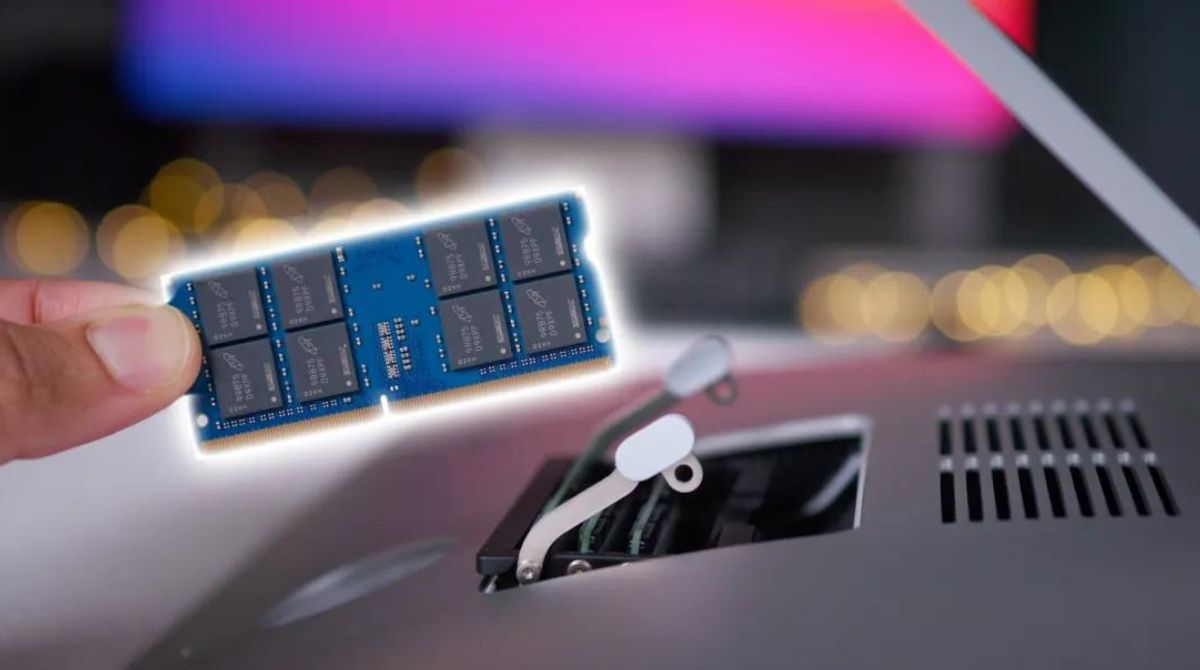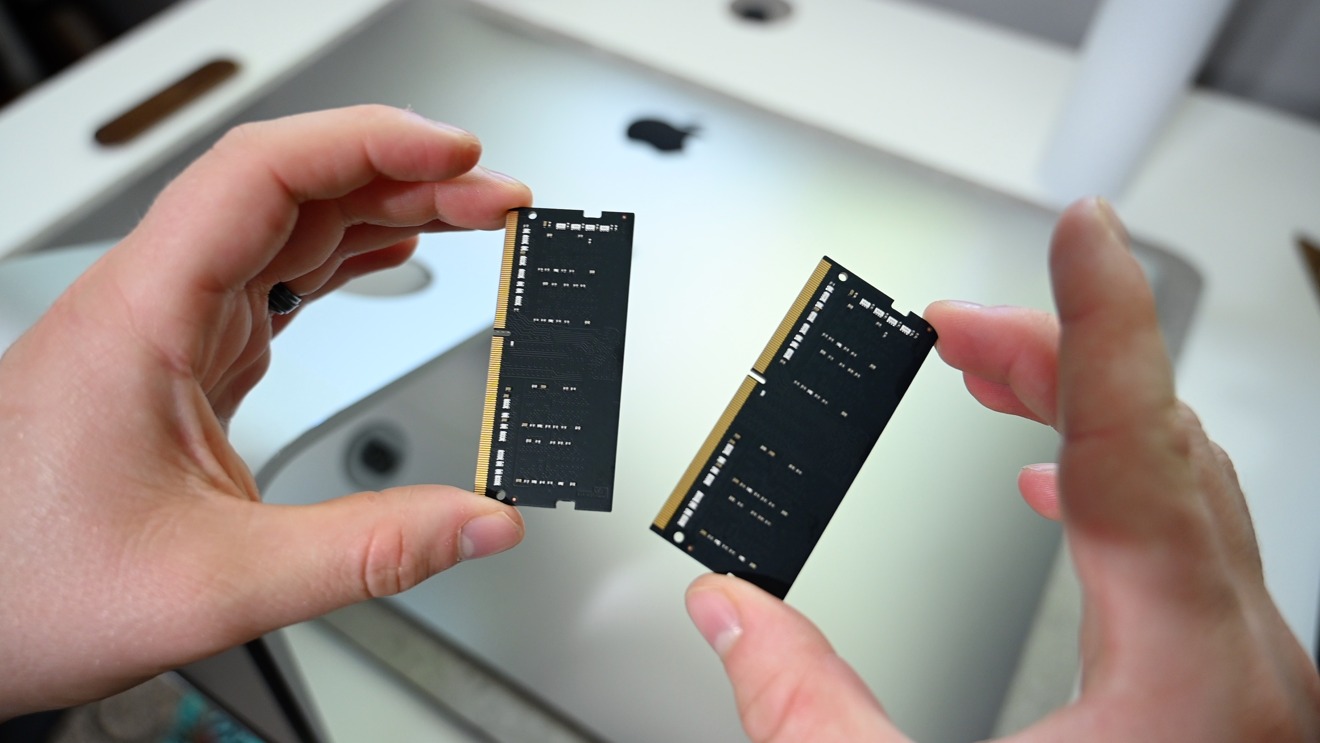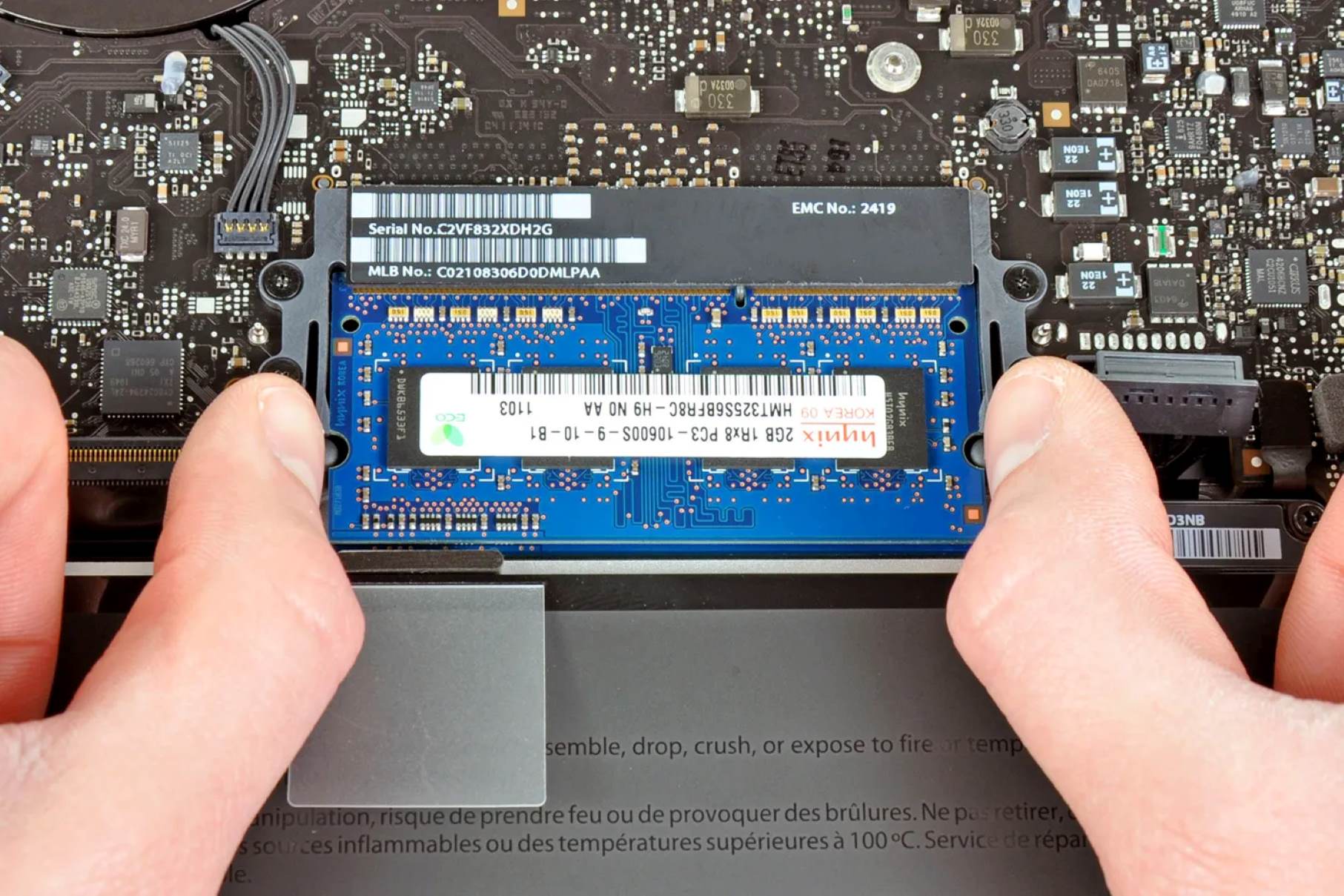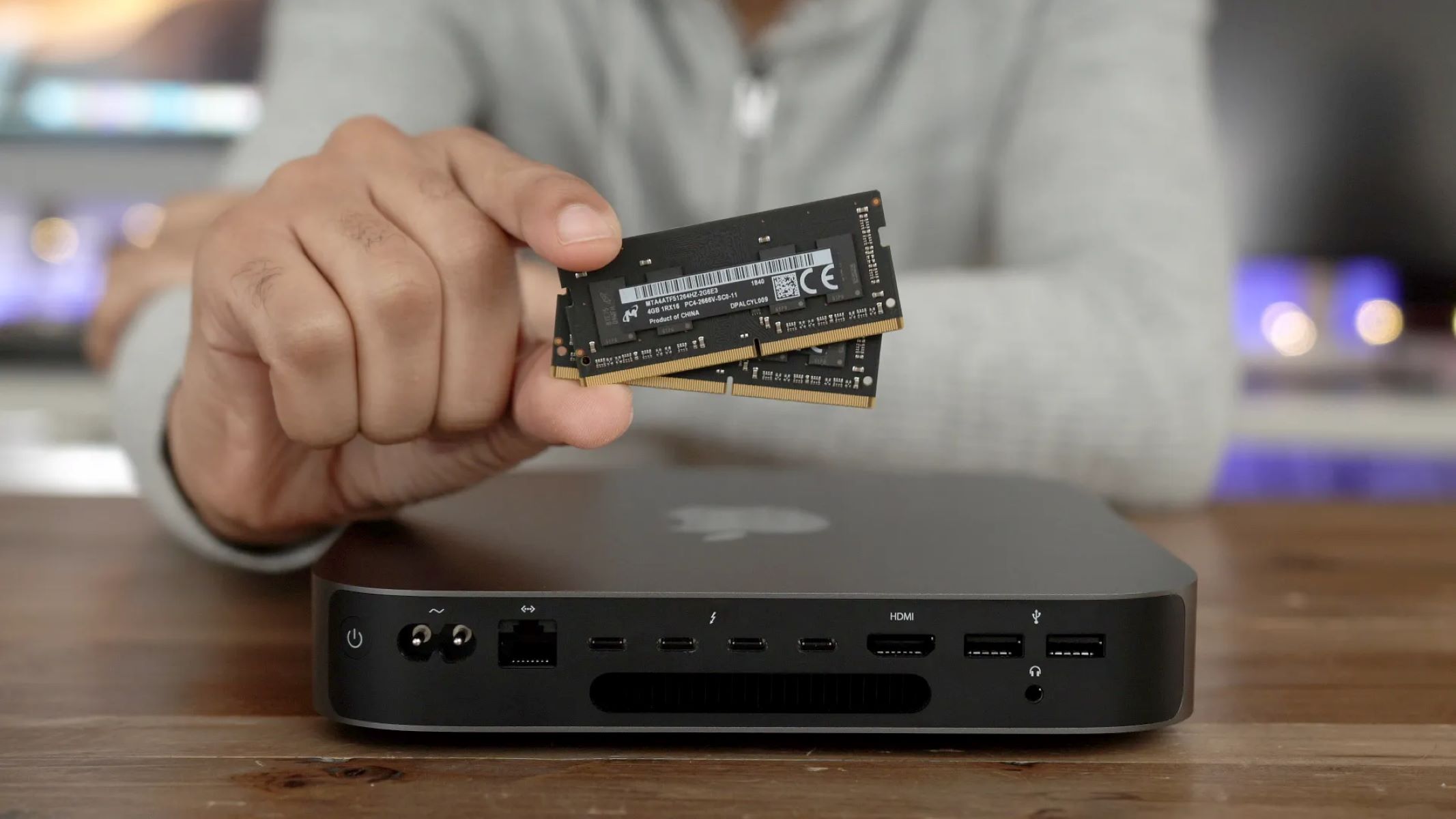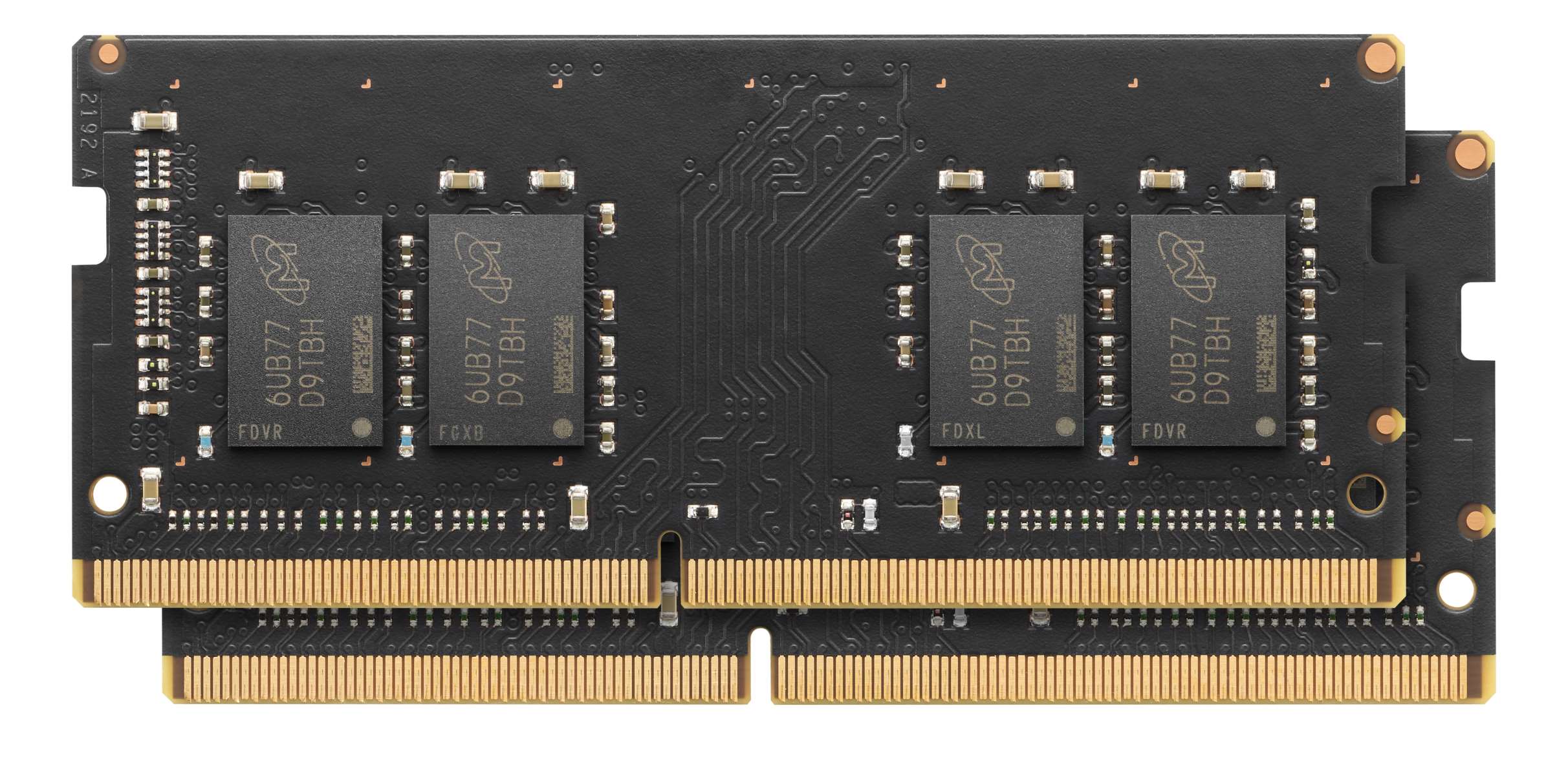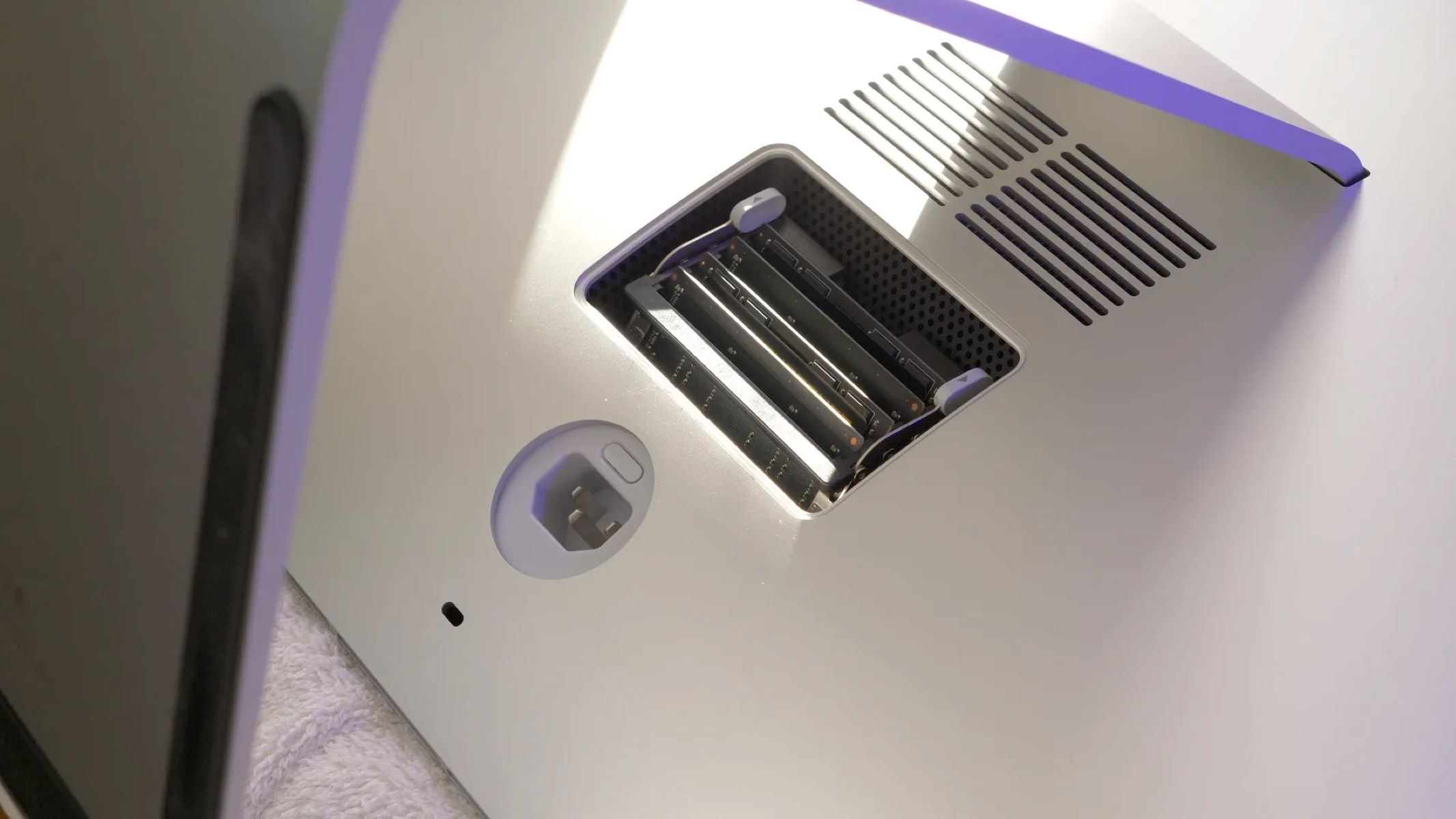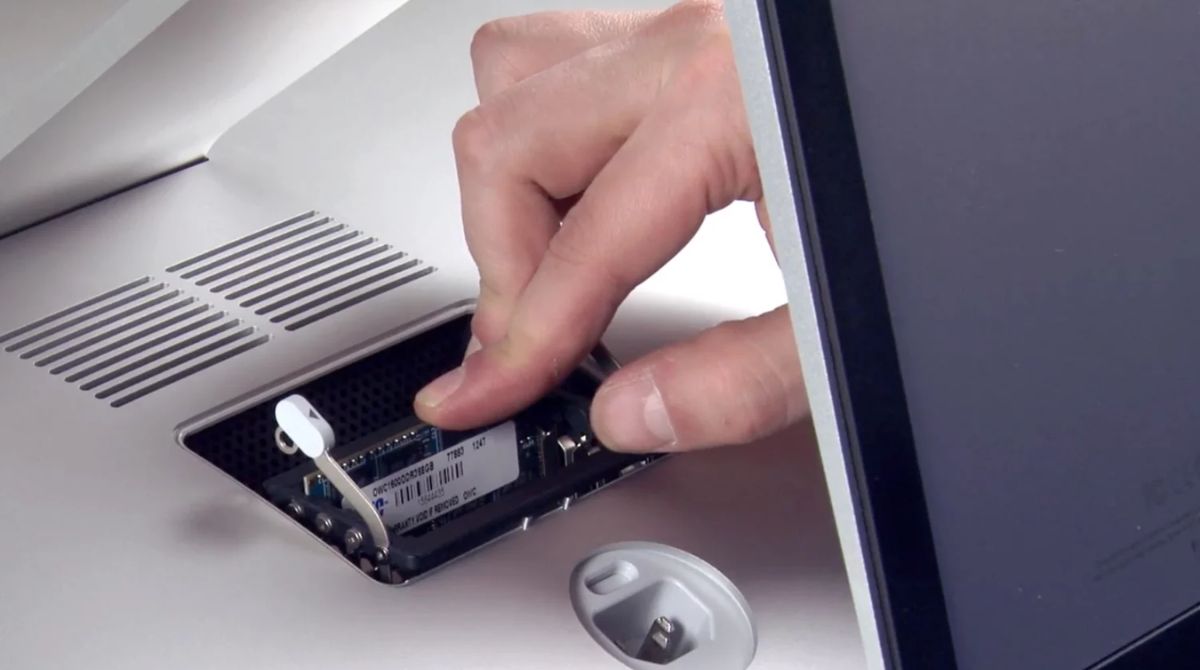Introduction
When it comes to powerful and efficient computing, the iMac is a popular choice among professionals and casual users alike. With its sleek design, high-resolution display, and impressive performance, the iMac is a reliable and versatile machine. One key factor that contributes to the iMac’s performance is its Random Access Memory, or RAM.
RAM plays a crucial role in the overall speed and responsiveness of your iMac. It is a form of temporary storage that allows your computer to quickly access and process data. The more RAM your iMac has, the smoother and faster it can handle complex tasks, such as multitasking, running demanding applications, or editing large files. Understanding the amount of RAM your iMac has and the options for upgrading can help you optimize your computer’s performance to suit your specific needs.
In this article, we will explore the details of RAM in iMac and answer the question, “How much RAM does the basic iMac model have?” We will also discuss the configurations available for increased RAM and the benefits of upgrading the RAM in your iMac. Additionally, we will highlight important considerations to keep in mind before deciding to upgrade the RAM in your iMac. By the end of this article, you will have a comprehensive understanding of iMac RAM and be equipped to make informed decisions about optimizing your computer’s performance.
RAM in iMac
RAM, or Random Access Memory, is a vital component of any computer, including the iMac. It serves as the temporary workspace where your iMac stores and retrieves data that is actively being used. Unlike permanent storage such as the hard drive or solid-state drive, RAM is volatile and gets cleared once the computer is turned off.
The amount of RAM in your iMac directly impacts its performance. When you open applications or perform tasks, your iMac loads the necessary data into RAM for quick access. Having sufficient RAM ensures that your iMac can run smoothly and handle multiple tasks simultaneously without experiencing significant slowdowns or lag. On the other hand, insufficient RAM can cause your iMac to struggle, leading to reduced performance and decreased efficiency.
Different models of the iMac come with varying amounts of RAM pre-installed. The basic iMac model typically comes with 8GB or 16GB of RAM. This amount of RAM is sufficient for everyday tasks such as web browsing, document editing, and multimedia playback. However, if you engage in more demanding activities like graphic design, video editing, or running virtual machines, you may require more RAM to ensure optimal performance and avoid potential bottlenecks.
It’s worth noting that the RAM in an iMac is not user-upgradable in all models. Apple has adopted a trend of soldering the RAM directly onto the logic board, making it impossible to upgrade the RAM yourself. Therefore, it’s essential to carefully consider your RAM requirements when purchasing an iMac, as it may not be something that you can easily change down the line.
However, there are some iMac models that still allow for RAM upgrades. These models feature a user-accessible RAM compartment that allows you to add or replace RAM modules. It’s important to check the specifications of your specific iMac model to determine if it offers this upgrade option. If your iMac does support RAM upgrades, it presents an opportunity to enhance the performance of your machine without having to purchase a new one.
In the next sections, we will delve into the available RAM configurations for increased performance, discuss the benefits of upgrading the RAM in your iMac, and explore important considerations before making any decisions about upgrading your iMac’s RAM.
How much RAM does the basic iMac model have?
The amount of RAM that comes with the basic iMac model depends on the specific configuration and release year. In general, the basic iMac model typically comes with either 8GB or 16GB of RAM.
The 8GB RAM configuration is suitable for most casual users who engage in everyday computing tasks such as web browsing, emailing, word processing, and multimedia consumption. It provides enough memory to handle these activities smoothly and efficiently without experiencing major performance issues. However, if you’re a power user or engage in resource-intensive tasks like video editing, 3D rendering, or running virtual machines, you might find 8GB to be limiting.
For those who require more horsepower or frequently work with memory-hungry applications, the 16GB RAM option is a better choice. This increased memory allows for smoother multitasking, quicker data processing, and improved overall system performance. It provides a significant boost in handling demanding applications and allows for better efficiency when working on tasks that require large amounts of data to be processed simultaneously.
It’s important to note that the RAM in the basic iMac model is soldered onto the logic board, which means it cannot be upgraded or replaced after purchase. Therefore, it is essential to carefully consider your RAM requirements when selecting the configuration of your iMac.
If you anticipate needing more than 16GB of RAM for your iMac, it is advisable to consider upgrading to a higher-tier model or customizing your iMac’s configuration at the time of purchase. Apple offers optional upgrades for some iMac models that allow you to increase the RAM up to 32GB or even 64GB, depending on the specific model and release year. These upgrades can significantly enhance your iMac’s performance and ensure optimal efficiency for memory-intensive tasks.
By assessing your specific needs and considering the potential memory requirements of the applications and tasks you regularly perform, you can make an informed decision about the amount of RAM you need for your basic iMac model. However, if you require more flexibility in terms of RAM upgrades, it may be advisable to explore other iMac models that offer user-upgradeable RAM options.
Configurations available for increased RAM
While the basic iMac model comes with a fixed amount of RAM that cannot be upgraded, there are other iMac models that offer configurations for increased RAM. These models provide more flexibility for users who require higher memory capacities to meet their specific needs.
For instance, some iMac models allow for RAM upgrades of up to 32GB or 64GB. These upgrades can be selected at the time of purchase or added later, depending on the specific model and release year. Having the option to customize the RAM configuration allows you to tailor your iMac to handle memory-intensive tasks such as video editing, 3D modeling, music production, and virtual machine usage with ease.
If you opt for a higher-tier iMac model or customize your configuration, you can take advantage of the increased RAM capacity to improve your productivity and maintain optimal performance even when handling resource-demanding applications. With more RAM, you can run multiple applications simultaneously, switch between tasks effortlessly, and experience smoother overall operation.
Upgrading the RAM in your iMac is a straightforward process for models that have a user-accessible RAM compartment. It involves purchasing compatible RAM modules and installing them in the designated slots. However, it’s vital to consult the iMac’s documentation or seek professional assistance to ensure the compatibility of the RAM modules and proper installation. Improper RAM installation can result in system instability or other performance issues.
It’s worth noting that upgrading the RAM in your iMac may not be necessary for every user. Before deciding to increase your RAM capacity, consider your specific computing needs and the requirements of the applications you use regularly. If your current iMac configuration meets your demands and operates smoothly, there may be no immediate necessity to upgrade.
However, if you find your iMac struggling to handle your workload, experiencing noticeable slowdowns, or encountering memory-related errors, upgrading your RAM can be a cost-effective and efficient solution. Adding more RAM can provide a significant performance boost, extending the usable life of your iMac by several years.
Ultimately, the availability of configurations for increased RAM in certain iMac models offers flexibility for users who require higher memory capacities. By considering your specific needs and evaluating the nature of your computing tasks, you can determine whether upgrading the RAM in your iMac is a necessary step to optimize its performance.
Upgrading the RAM in an iMac
Upgrading the RAM in an iMac can be a cost-effective way to boost its performance and extend its lifespan. However, it’s important to note that not all iMac models allow for user-upgradeable RAM. Before attempting to upgrade your iMac’s RAM, it’s essential to determine whether your specific model supports this option.
For iMac models that do offer user-upgradeable RAM, the process is relatively straightforward. Here are the general steps to follow when upgrading the RAM in your iMac:
- Research and purchase compatible RAM modules: Start by researching the type and specifications of RAM modules that are compatible with your iMac model. Ensure that you select reputable brands and purchase RAM modules from trusted suppliers.
- Prepare your iMac for the upgrade: Before proceeding, ensure that your iMac is turned off and disconnected from the power source. Place a soft, clean cloth on a flat surface to protect your iMac’s display.
- Locate the RAM compartment: Depending on your iMac model, the RAM compartment can be located at the back or bottom of your iMac. Consult the iMac’s documentation or manufacturer’s website for detailed instructions specific to your model.
- Remove the existing RAM modules: Gently release the RAM module retention clips, if applicable, and carefully remove the existing RAM modules from their slots. Handle the RAM modules by their edges to avoid static discharge or damage.
- Install the new RAM modules: Align the notch on the RAM module with the key in the RAM slot and carefully insert the module. Apply equal pressure on both ends of the module until it is fully seated in the slot. Repeat this step for the remaining RAM modules.
- Secure the RAM modules: If applicable, gently press the RAM modules down until you hear a click, indicating that they are securely in place. Ensure that the retention clips, if present, are properly engaged.
- Close the RAM compartment: Replace the cover or panel of the RAM compartment and secure it in place according to your iMac’s specifications.
- Turn on your iMac and verify the RAM upgrade: Once the RAM upgrade is complete, reconnect the power source and turn on your iMac. Open the “About This Mac” section from the Apple menu to confirm that the new RAM modules are recognized and properly installed.
It’s important to remember that upgrading the RAM in your iMac may void any existing warranty or support agreements. If your iMac is still under warranty, consider contacting Apple or an authorized service provider to perform the upgrade for you. They can ensure that the process is done correctly and without any risk to your warranty coverage.
Overall, upgrading the RAM in your iMac can provide a significant performance boost, allowing for smoother multitasking and improved overall efficiency. By following the proper steps and precautions, you can successfully upgrade the RAM in your iMac and enhance its capabilities to meet your specific computing needs.
Benefits of increasing the RAM in your iMac
Increasing the RAM in your iMac can have several significant benefits that enhance the overall performance and usability of your machine. Here are some key advantages of upgrading your iMac’s RAM:
- Improved multitasking capabilities: With more RAM, your iMac can handle multiple applications and tasks simultaneously without experiencing a significant drop in performance. This means you can smoothly switch between applications, run resource-intensive software, and perform demanding tasks without encountering significant lag or slowdowns.
- Enhanced speed and responsiveness: Additional RAM allows your iMac to store more data for quick access, reducing the need for your computer to rely on virtual memory from the hard drive or solid-state drive. This speeds up data processing, resulting in faster load times, smoother interactions, and overall improved responsiveness of your iMac.
- Optimized performance for resource-intensive tasks: RAM plays a crucial role in handling memory-hungry applications such as video editing software, 3D modeling tools, and virtual machines. By increasing the RAM capacity, you provide your iMac with the necessary resources to handle these tasks efficiently, reducing rendering times and improving overall productivity.
- Improved stability and reduced crashes: Insufficient RAM can lead to system instability, frequent crashes, and application freezes. By upgrading your iMac’s RAM, you provide a larger working space for your computer, mitigating these issues and ensuring a more stable computing experience.
- Extended lifespan of your iMac: As software and applications become more resource-intensive over time, having adequate RAM becomes crucial to ensure optimal performance. By increasing the RAM in your iMac, you future-proof your machine, allowing it to meet the demands of new software updates and operating systems, and extending its usefulness for years to come.
It’s important to note that the benefits of increasing your iMac’s RAM will vary depending on your specific computing needs. If you primarily engage in basic tasks like web browsing, email, and word processing, the impact of upgrading the RAM may be minimal. However, for power users, creative professionals, and individuals running memory-intensive applications, the benefits can be significant and positively impact workflow and productivity.
Before deciding to upgrade your iMac’s RAM, carefully consider your specific computing requirements and the types of tasks you regularly perform. This will ensure that the increased RAM capacity aligns with your needs and provides a noticeable improvement in performance, making the upgrade a worthwhile investment.
Considerations before upgrading the RAM in your iMac
While upgrading the RAM in your iMac can offer significant performance benefits, there are a few important considerations to keep in mind before making the decision. These factors will help you determine whether upgrading the RAM is the right choice for your specific needs and circumstances. Here are some key considerations:
- Compatibility: Before purchasing RAM modules, ensure that they are compatible with your iMac model. Check the specifications and requirements provided by Apple or consult the iMac’s documentation to ensure that the RAM modules you choose are the correct type, speed, and capacity.
- User-upgradeable or not: Determine whether your iMac model allows for user-upgradeable RAM. Not all iMac models have this option, as some feature soldered RAM modules that cannot be replaced or upgraded. If your iMac does not support user-upgradeable RAM, you will need to consider other options, such as customizing your iMac configuration at the time of purchase.
- RAM requirements for your tasks: Evaluate the specific tasks and applications you regularly use on your iMac. Determine if these tasks require more RAM to run smoothly and efficiently. Power users, creative professionals, and individuals working with memory-intensive software may benefit significantly from upgrading their iMac’s RAM.
- Cost-effectiveness: Consider the cost of upgrading the RAM in your iMac versus the potential benefits it will provide. If your iMac already meets your current needs and operates smoothly, upgrading the RAM may not provide a noticeable improvement. Evaluate whether the performance gains from the RAM upgrade justify the expense.
- Future needs and longevity: Take into account your future computing needs and the lifespan of your iMac. If you anticipate requiring more memory for future software updates or new applications, upgrading the RAM can future-proof your iMac and extend its usefulness for a longer period.
- Technical proficiency: Assess your comfort level with performing the RAM upgrade yourself or seek professional assistance. Upgrading the RAM in your iMac requires handling delicate components and following specific installation procedures. If you’re not confident in your technical abilities, it may be advisable to have a professional upgrade the RAM for you.
By considering these factors and weighing the benefits against your specific requirements, you can make an informed decision about upgrading the RAM in your iMac. It’s important to carefully evaluate the potential impact on performance, cost-effectiveness, and your future computing needs to ensure that the RAM upgrade aligns with your goals and provides a noticeable improvement in your iMac’s performance.
Conclusion
RAM is a crucial component of your iMac’s performance, playing a significant role in multitasking, data processing, and overall system speed. Understanding the RAM capacity of your iMac, its upgrade options, and the considerations involved is essential in optimizing your computer’s performance to meet your specific needs.
The basic iMac model typically comes with either 8GB or 16GB of RAM, which is suitable for everyday tasks. However, for more resource-intensive activities, upgrading to a higher configuration or customizing your iMac’s RAM at the time of purchase may be necessary.
Upgrading the RAM in compatible iMac models offers several key benefits, including improved multitasking capabilities, enhanced speed and responsiveness, and optimized performance for memory-intensive tasks. It can also extend the lifespan of your iMac by ensuring it can efficiently handle future software updates and increasing memory requirements.
Before upgrading the RAM, consider factors such as compatibility, the technical proficiency required, future needs, and cost-effectiveness. Evaluate whether the performance gains and potential longevity of the upgraded RAM justify the investment for your specific computing tasks and requirements.
Whether you choose to upgrade the RAM in your iMac or make a more informed decision about your next iMac purchase, understanding the importance of RAM and its impact on performance empowers you to optimize your computing experience and enhance productivity.
Remember to consult the specifications of your particular iMac model and, if needed, consider seeking professional assistance for the RAM upgrade process. With careful consideration and the right resources, you can make the best decision for your iMac’s RAM and take full advantage of its capabilities.







